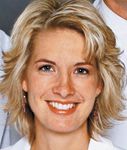Know your options when billing for low vision services
Various billing options can help maximize practice income and turn vision loss into a profit center.

That's not the case anymore, according to Rebecca Kammer, OD, FAAO. Various billing options can help maximize practice income and turn vision loss into a profit center, said Dr. Kammer, associate professor, Southern California College of Optometry, Fullerton, CA, and chief at the college's Mary Ann Keverline Walls Low Vision Rehabilitation Center.
"Once you dive into low vision, you've got to learn the rules of the game or it's not financially worth going into," she said. Dr. Kammer added that she has received dozens of e-mails from optometry school graduates interested in offering low vision services in their practices.
Before launching into low vision services, she advised, first learn some of the ground rules, especially what various health-care plans cover and their reimbursement criteria. Medicare, for instance, does not cover low vision devices but Vision Service Plan (VSP), a leading eye-care coverage plan, offers up to a $1,000 benefit for low vision services and devices.
Every reimbursement typically requires practices to fill out mounds of paperwork, however. Like other plans, VSP requires optometrists to submit a patient treatment plan, a copy of the catalog sheet that shows their wholesale cost for devices, and a completed pre-authorization form.
Although a learning curve exists, once optometrists and their billing staffs are at full speed, they can streamline the process by creating electronic templates or formatted letters that can be populated after each patient exam, Dr. Kammer said.
Recent developments
"Not everyone is aware that Medicare pays for occupational therapist (OT) services, what the codes are, or how to bill or work with an OT in their office," Dr. Kammer said, adding that without using OTs, optometrists may not be able to rely on third-party payers. "OTs enable private practitioners to offer a better process for patients like in-home rehab and to get closer to a comprehensive rehab model like those found in most nonprofit settings."
Optometrists can bill Medicare for their services in several ways, she said. All eye doctors use E/M codes in evaluations that apply to specific procedures, such as those in a glaucoma evaluation. Not many, however, consider billing based on the amount of face-to-face time they spend with patients, which includes educating them about their eye conditions, discussing treatment plans or options, or coordinating their care with specialists.
"If you spend more than 50% of your time doing any of these things in your patient encounter, then you can bill based on time," she said. "Typically, if it's due to the complexity and length of time, it can be a high-level code. It's very well justified, but you do need to document in the patient's record how your time was spent."
Consultation codes
Another option is consultation codes. Dr. Kammer said that those codes are more specific, have different usage criteria, and reimburse at a higher rate. Essentially, services must be based on a doctor's written or verbal referral, which usually are reserved for complex cases requiring a second opinion.
She admitted, however, that because consultation codes span a gray area, many optometrists prefer to play it safe and are somewhat nervous about crossing into new territory even though it could result in a legitimate source of higher income.
"We're not utilizing a system in place for what we already do," she said, adding that ophthalmologists are comfortable using E/M or consulting codes. "These are the same codes for either ophthalmology or optometry. If we're not using them to the highest level, then we're cheating our profession. We're saying optometry isn't doing medical procedures."
Some optometrists offering low vision services may feel more comfortable billing specific services separately in addition to the E/M or consultation code. Consider codes for retinal photography or visual field exams. Dr. Kammer pointed to an ophthalmologist who offers comprehensive low vision rehabilitation and routinely bills separately for such procedures without any problems.
In addition to attending conferences, she said, the best way to learn these dos and don'ts is to team up with another eye-care professional (ECP) whose low vision practice is outside your service area but within your state. Offer to pay a consulting fee, which shows that you respect his or her time and knowledge, or suggest sending the ECP your complex cases in exchange for assistance. Another avenue is your local optometry association. Many have a low vision section that can provide valuable information.
"Low vision isn't something that optometrists should just dabble in," Dr. Kammer concluded. She added that, by applying some of these strategies, her center has moved closer to resembling a comprehensive rehabilitation model. "Know the basic idea of what you'll need . . . which can at least be a jumping-off point."
Newsletter
Want more insights like this? Subscribe to Optometry Times and get clinical pearls and practice tips delivered straight to your inbox.